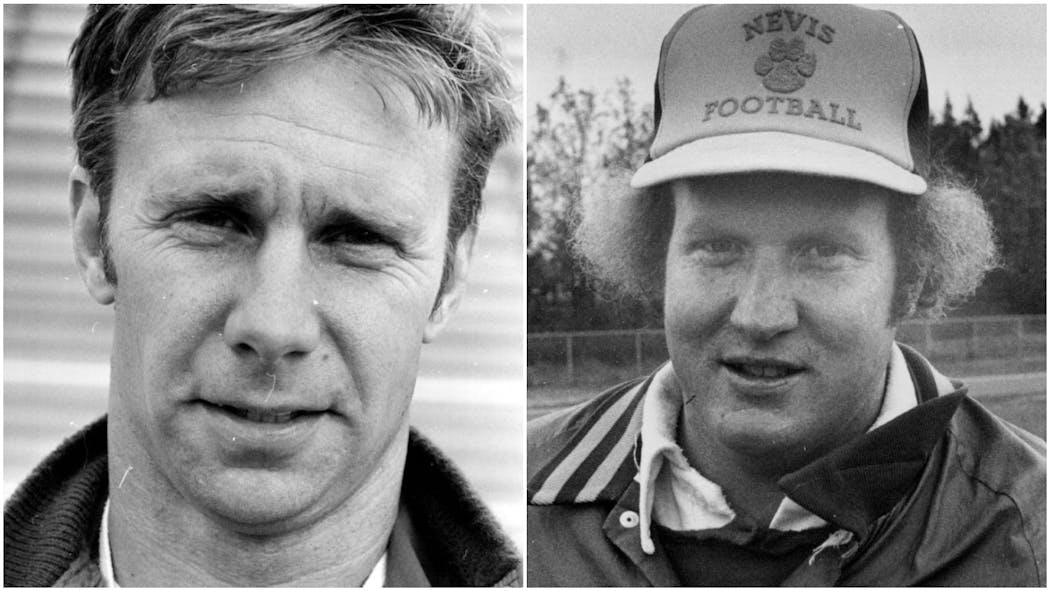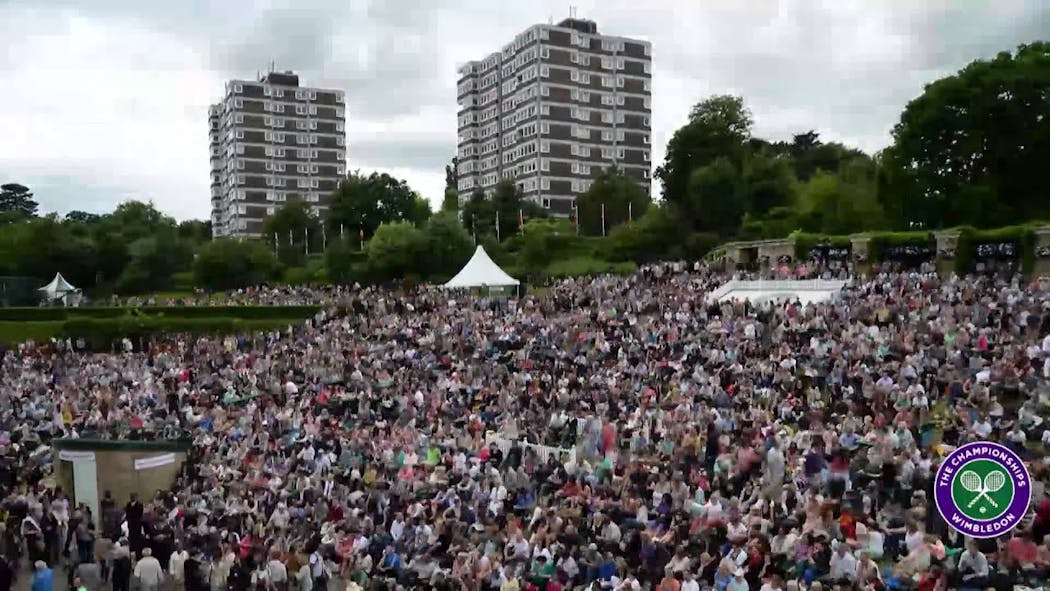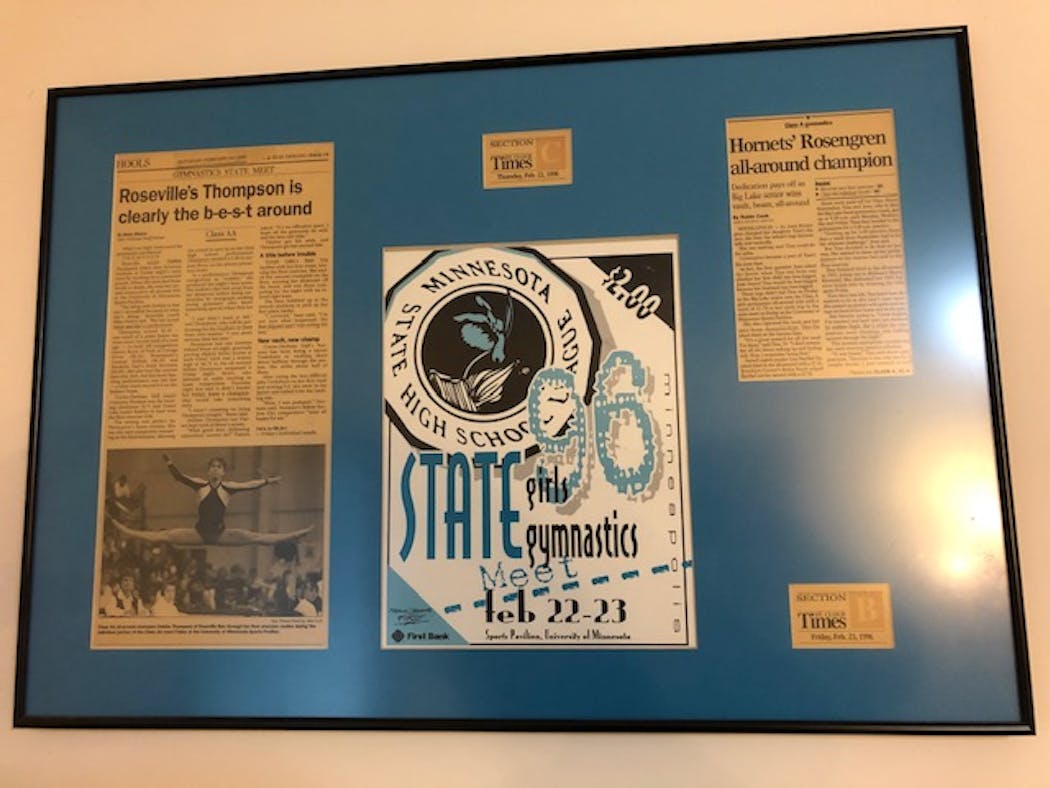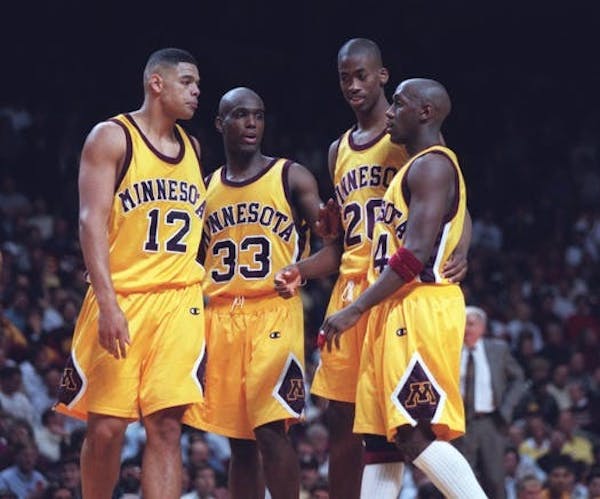Now that we're well into our third month without sports, Star Tribune sports writers and editors have been thinking back on the favorite events they've covered. They range from the biggest of games to others that have been long forgotten by most people, if they knew about them in the first place.
Some were covered for the Star Tribune, some for other news organizations. The only thing in common was we covered the events instead of just attended them. We're publishing our memories this week, and we hope you share some of your favorites in the comments.
This batch of memories are quirky ones ranging from tennis to football to baseball to a state tournament that led to a lifetime commitment.
Howard Sinker, the Star Tribune's digital sports editor, watched two multi-year football losing streaks end within a week of one another.
I am pretty sure I'm the only person who witnessed both of these events when they took place six days apart.
On the first Saturday in September 1980, in a stadium that has never been as packed since, Macalester defeated Mount Senario, a small Wisconsin school that no longer exists, 17-14, to snap an NCAA-record 50-game losing streak. Six days later, in front of 150 or so people in northern Minnesota, Nevis High School ended a 39-game losing streak with a 30-0 victory over Pillager.
“Coach Harvey was hoisted by his players and carried in circles because there were no celebrants cheering in the bleachers. For that matter, there were no bleachers.”
Both teams had been the subject of ridicule, some provided by the Minneapolis media. ("Macalester College's football team burrowed its way into the record books and the hearts and minds of underdogs everywhere Saturday with a convincing 0-44 loss to St. John's," the Minneapolis Tribune wrote of the game that broke the old streak record of 39.)
And there was the afternoon when Macalester scored on the first play before Concordia rallied to win. The final was 97-6. Not long before that, Nevis attracted our attention with a 96-0 loss.
(A disclaimer: I am a Macalester graduate. I saw the last victory – 6-0 over Gustavus – before the losing streak started. I wrote things during college that did not make me the favorite of the football coach. He's now a volunteer assistant at the high school down the street from our house. I should go apologize.)
I remember details from each of the victories. Macalester trailed 14-0 at halftime, and score updates were being shown on ABC during the major-college games it was showing. The press box was full too. Macalester had more players than the visitors, but the enrollment at Mount Senario was only 230. If the Scots couldn't win this game, when would they ever win?
When I called the athletic director at Pillager, he knew why I was coming there before I could tell him. That game was never in doubt. I walked the sidelines with Nevis players and parents. Both groups were giddy once the outcome became clear, which wasn't long after kickoff.
Tears were shed after both games and the winning coaches were carried on the shoulders of their players.
"Coach Harvey was hoisted by his players and carried in circles because there were no celebrants cheering in the bleachers," I wrote about Nevis. "For that matter, there were no bleachers."
For Macalester, a freshman from Rochester named Bob Kaye kicked the winning 23-yard field goal with 11 seconds left. It barely cleared the crossbar. Cool under pressure? Nope. "I was hoping we'd score a touchdown so I wouldn't have to try the field goal," he admitted.
I'd ask the coaches for their memories. But Macalester coach Tom Hosier died five years ago. Joe Harvey [whose obituary called him "Joseph J. (Coach) Harvey" in the headline], died at age 60 in 2014.
Both had success after the streak-breakers. Nevis went to the state nine-man semifinals two years later. In 1986, Macalester went 7-2-1 in the MIAC, tying St. John's and beating St. Thomas.
The joy of those moments, combined with what those schools had gone through, made those games as memorable for me as they were for the winning teams.
Randy Johnson, the Star Tribune's Puck Drop editor, got his start as a reporter working at his hometown newspaper in South Dakota. His timing was excellent.
What's the best game I've ever covered? It's a tough call because I've been fortunate enough to cover some thrilling college football games, including a Rose Bowl, and some great college hockey games, but I have to go back to a sport that I've covered only four times: Major League Baseball.
Those four times happened to be the Twins' four home games in the 1987 World Series, and Game 7 was the best and most important.
I have to start with the back story to set it all up. I graduated from Moorhead State in May 1987 and began my career two months later as sports editor of the Huron Daily Plainsman, a newspaper with a circulation of about 10,000 in eastern South Dakota, where I grew up.
On the afternoon of Oct. 12, the Twins beat Detroit 8-5 to win the American League pennant. As the Twins got the final out, the 22-year-old smart-aleck in me jokingly asked my boss, managing editor Roger Kasa, "So, are you gonna send me to the World Series?''
He responded, "Let's see what we can do.''
I didn't think much of it and continued to work on the high school story du jour. A couple of hours later, Roger handed me a piece of paper with a name and phone number on it.
"Call this guy,'' he said, "and he'll set you up with a press pass.''
The name on the paper was Twins President Jerry Bell, and four days later I was on my way to the Cities to cover the World Series.
So just how did a 10,000-circulation paper get a press pass, even if it was in the very last row of the auxiliary press box in the upper deck behind home plate? Turns out a Huron businessman named Paul Christen was a partner of Twins owner Carl Pohlad in the banking industry, and Paul made a call.
As for Game 7, the tension and anticipation in the Twin Cities was palpable that Sunday night. Things didn't look good early when the Cardinals took a 2-0 lead in the second inning. The Twins would chip away – Steve Lombardozzi's single scoring Tom Brunansky in the second, Kirby Puckett's double plating Greg Gagne to tie it 2-2 in the fifth. Meanwhile, starter Frank Viola found his groove with eight innings of six-hit, no-walk ball.
Gagne gave the Twins the lead for good in the sixth when he legged out an infield single as Bruno scored, and Dan Gladden doubled in Tim Laudner for the insurance run in the eighth, furthering the anticipation in the raucous Metrodome.
A 1-2-3 ninth from Jeff Reardon put the exclamation point on a world championship that Minnesota – and folks in the Dakotas for that matter – had been aching to call their own.It was a thrill to cover it all at such a young age. But I was quickly brought down a few notches to reality.
Two days later, I was covering was a nine-man football game during a snowstorm in Tulare, S.D.
Naila-Jean Meyers, the Star Tribune's senior assistant sports editor, went to Wimbledon in 2013 and took in the men's final in an unusual way.
For the best game I ever covered, I didn't even enter the stadium.
The New York Times sent me to Wimbledon for the first time in 2013. On July 7, I was to document the scene on the grounds of the All England Club as Andy Murray, once again, attempted to become the first British man to win Wimbledon since 1936.
The tournament had already been unusual. Big stars like Roger Federer, Rafael Nadal and Serena Williams lost early. There were tons of injuries and even complaints about the grass being too slippery, of all things. On Twitter it was referred to as #wimbledone, #wimblegeddon, #wimbleweird.
None of that mattered that Sunday. It was still No. 1 Novak Djokovic vs. No. 2 Andy Murray in the men's singles final. Murray had lost in the final the year before and had broken down in tears afterward, telling the crowd, "I felt like I was playing for the nation and I couldn't quite do it."
The 2013 final wasn't close on the scoreboard -- Murray won 6-4, 7-5, 6-4. Not that I really saw any of it. I spent most of the afternoon talking to fans on so-called Henman Hill, a grassy expanse with a large video screen.
Based on the tension in the crowd, the match was a nail-biter. During the final game, I was standing at the base of the hill underneath the large video screen. I couldn't see the match, but I didn't need to in order to know what was happening.
The crowd was nearly silent during points as if it was collectively holding their breath, letting out agonized sighs when Murray lost points, roaring when he won them. Murray needed four match points to capture the championship. On each one, the gathered fans seemed on a verge of nervous breakdown, trying to will him on from afar.
Murray later said that last game "will be the toughest game I'll play in my career, ever."
He won the game. He won the match. The euphoria of the fans, the release of 77 years of anticipation, was hard to capture in words, or even on video. I shot a video of that moment, and my sorry little iPhone microphone can't do justice to how loud it was. But watching it now, I still get a lump in my throat.
It's still, and will probably always be, the best sporting moment I witnessed in person.
Love and gymnastics. Star Tribune copy editor Brian Wicker met his wife while they were working together at a high school tournament.
The frame hangs downstairs, near my movie poster of 1931's "Dracula" in French (Le plus terrifiant des vampires!). In it, there's a program cover, two stories and a photo, all involving the 1996 gymnastics state meet at the University of Minnesota Sports Pavilion. But really, it's the beginning of The Story of Us – my wife, Robin, and me.
We met as reporters at that meet – me for the Star Tribune, she for the St. Cloud Times – and were dating a few months later. We were engaged during the state meet, exactly one year after we met.
Sometime after we'd been dating a while, I picked up a book entitled, "What You Need to Know Before You Get Married." I showed it to Robin and told her I wouldn't propose until I finished it. From time to time, she'd coyly ask how the book was coming. I usually told her I was still on Chapter 1, or I'd lost it.
By the 1997 state meet, however, I was ready. I covered the event again; Robin didn't, but was coming to visit me that weekend. I'd worked out all the details, but Robin made an unexpected last-minute request: She'd come to the Cities with her friend, Kendra, and asked if Kendra could crash that night at my apartment. My proposal would now have a gallery.
They were tired by the time I got home. I went to the shelf and told Robin, "I finished the book." She was instantly alert. Kendra was still sleepy.
I read a little something I'd written in the book and got down on one knee. Now Kendra was wide awake, saying, "Oh, my God," over and over again.
She celebrated with us then and later, as a bridesmaid and singer at our wedding.
The photo in that frame downstairs is a Star Tribune picture of the 1996 Class 2A all-around champion. But in the background, seated together on press row, are the fuzzy outlines of Robin and me working on our stories on the day after we'd met.
We're still side by side. We celebrated our 22nd anniversary on May 29.

Towns finds joy trying to stop 'best of the best' in Durant
AP Sports Week in Pictures: Pitcher Randy Vazquez, Olympic flame lit and Nelly Korda's pond splash
Police clear out a migrant camp in central Paris. Activists say it's a pre-Olympics sweep

Vikings' need at linebacker is low, but depth is concern






